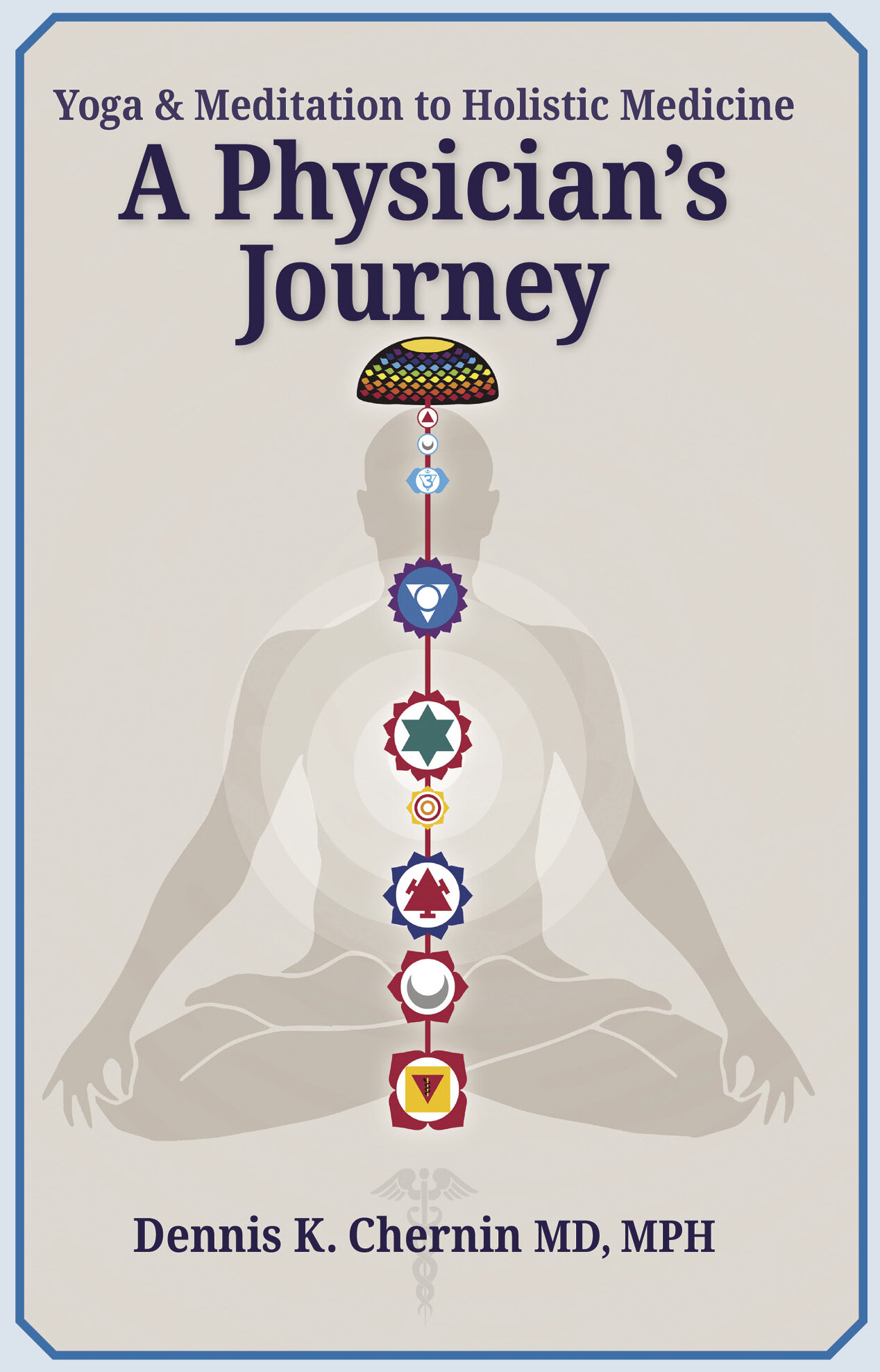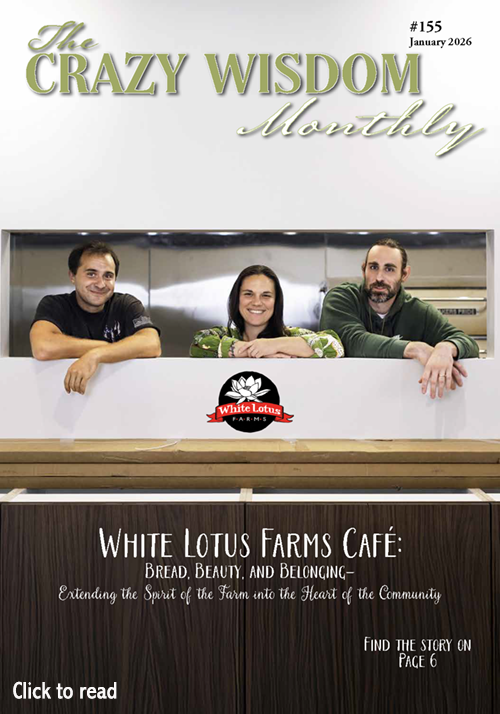From the Preface
After many years on the path of meditation and holistic health, I’m delighted to finally tell the story of my professional and spiritual journey. I am using the singular journey because my spiritual and professional lives have melded into one. For the last seven years I had been thinking of writing a sequel to my book How to Meditate Using Chakras, Mantras and Breath, describing the meditation practice that I had been initiated into by Swami Rama, which has been integral to my holistic medical practice. However, every time I attempted this task, I would develop a severe case of writer’s block. I tried using various concentration techniques including meditation on the fifth chakra, the center of communication and creativity, but to no avail.
Understanding my angst and wanting to release me from this quagmire, my life partner, Dr. Ruma Banerjee, wisely suggested that I expand How to Meditate, incorporating more about my personal spiritual and professional medical journey. So, this book begins with my early experiences with living in a yoga ashram that seeded my lifelong experiment with integrating meditation and holistic medicine and illuminates this journey with personal anecdotes and case histories. Initially, I was uncomfortable about writing a memoir, concerned that it might be an egotistical exercise. However, when I started putting pen to paper, to my astonishment the words came flowing out and I began to feel at ease with the project.
The book is divided into five parts. In Part I, I describe my childhood years, my family, medical school, meeting Swami Rama, the birth of my children and my life in Ann Arbor. Part II delves into my study of yoga philosophy, the foundation of my meditation practice and introduces the three major paradigms from yoga and meditation philosophy: the koshas, the chakras and raja yoga, which I have used in my personal spiritual and medical practice. I believe these paradigms offer clear and comprehensive models to understand human health and interpret disease. My forays into tai chi, kirtan, Jewish Kabbalistic and the microcosmic Taoist meditation practices are described and compared to the yogic meditation path.
Part III presents the theory and practical application of raja yoga, the royal path of meditation, which integrates all the other paths of yoga, including karma, bhakti, jnana, tantric and mantra yoga. Part IV is a practical guide to the meditation system that I was taught by teachers from the Himalayan Mountain tradition.
Part V, the final section of the book, provides a detailed description of the therapeutic modalities I use in my medical practice, including nutrition, Ayurveda, exercise, breathing techniques, meditation, psychotherapy and homeopathy. It includes several case histories that illustrate how I integrate these varied modalities within the paradigms of the chakras and the koshas.
From Fourth Chakra Case History
SK is a 66-year-old mechanical engineer who was semi-retired. For many years, he had practiced meditation, delving into Buddhist and yogic philosophy. Three years previously, when away from home, his 15-year-old son was killed in a tragic accident. Receiving the news, he immediately felt pain in the center of his chest, which exacerbated his asthma. He felt he was going to die from oxygen deprivation. He couldn’t cry. A rather stoic person, he had grown up being told that men don’t cry.
Although it was never articulated, he felt that his wife blamed him for being away at the time of their son’s death. She became emotionally and physically distant, which deepened his sense of loss, loneliness, and grief.
After six months of continued chest discomfort, a stress echocardiogram and angiography, led to the diagnosis that he was in heart failure. A stent placed in his left anterior descending artery (widow making artery) alleviated the chest pain, but he remained in heart failure. The prescribed medications were of no avail and his physicians were at a loss to understand why he wasn’t improving.
Charka Perspective: In my opinion, SK was suffering from a broken heart. Despite the medications, his cardiac problems persisted. From a yogic perspective, the mental and physical bodies are intimately connected through the energy body. SK’s heart problems were partly a manifestation of grief following his son’s demise. His wife’s isolation deepened his sadness and guilt about having been away. From a chakra perspective, the imbalance was in the fourth chakra, the heart-center.
Treatment: I recommended individual psychotherapy, believing that it would help SK tap into suppressed feelings from his childhood associated with very controlling and critical parents, which resulted in repressed anger, sadness, and frustration. Therapy could also be an outlet for his current grief and loss. I also suggested marital therapy.
We worked on improving SK’s diet, moving more toward a mostly vegetarian heart-healthy diet to help lower his cholesterol. I recommended less red meat and larger portions of beans and whole grains, which are associated with less heart disease. I also suggested a high potency probiotic to enhance intestinal microbiome health.
We also worked on yoga postures for opening the chest (camel, bridge, cobra, and fish). I taught him the calming practice of alternate nostril breathing to balance the right and left energy channels. After learning to slow down and regulate his breath, we worked on lung and heart stimulating pranayama techniques such as kapalabhati and bhastrika. I suggested vigorous walking to improve cardiovascular health.
I recommended that he use the fourth chakra, the center of love, compassion, loving kindness, and self-forgiveness, as a focus of his meditation together with the associated bija mantra, Yam. For his morning meditation, I suggested that he repeat the mantra, Om Hrim Shrim Klim Hamsa Soham Swaha. Since he is Jewish, we discussed reciting the Shema prayer upon waking and going to sleep to help lessen his sense of aloneness and to enhance feelings of connection to something larger than his own self-suffering.
I prescribed Natrum Mur in high potency (10M), which is the classic homeopathic grieving remedy for people who isolate rather than reach out for consolation and comfort. Later, I added the remedy cactus grande 30C and calcium fluoride 6X to help improve heart muscle strength and contractility.
Outcome: About six months after following most of my suggestions, SK’s heart ejection fraction went from 26 to 46, reflecting greater heart strength and indicating that he was out of heart failure. He lost seven pounds. He was better able to communicate with his wife and they were enjoying time spent together. Having made substantive progress, he realized that he needed to continue to incorporate holistic approaches to heal in body, mind, and spirit. From a yogic perspective, his fourth chakra had been strengthened.
From In Retrospect
I am now in the seventy-second year of this life’s journey and am regularly asked by patients, family, and friends about my retirement plans. While I have pondered this question, the truth is that the practice of holistic medicine and caring for people is part work and part spiritual practice for me. In fact, my spiritual life is so intertwined with my medical practice that they have become one and the same.
The doctor’s black bag I carry contains not only the standard instruments for diagnosis and care but also guidance for dietary adjustments, supplements and nutriceuticals, homeopathic remedies, yoga postures and breathing techniques, and meditation practices. For example, I show my patients which yoga postures could be used therapeutically for an underactive thyroid or lower back pain and teach breathing exercises to patients suffering from asthma, anxiety, or depression.
Read related article: Exploring Kirtan Chanting
I practice the different types of yoga that I describe in the book, including karma yoga, serving people and their health needs as selflessly as possible. I practice bhakti yoga by caring deeply about my patient’s overall well-being with as much compassion and empathy as possible. Through my study and teachings, I practice jnana yoga while the practice of raja yoga brings it all together. I help others see how ethical and simple living can combine with healthy physical and dietary habits and the practice of meditation, to become the best person they can be.
When I look back on my career, I feel grateful. I have been privileged to treat four generations of some families and witnessed how patterns of behavior and health are passed down, what homeopaths call miasms. Besides my public health work with its community and global implications, my private family practice is preventive in its focus with an emphasis on good nutrition, exercise, natural medicines when possible, and holistic practices. I feel very blessed to have had the opportunity to care for patients and to guide them on the path of holistic and healthful living.






































































































































































































Excerpts From Yoga & Meditation to Holistic Medicine: A Physician’s Journey, a new book by Dr. Dennis Chernin.